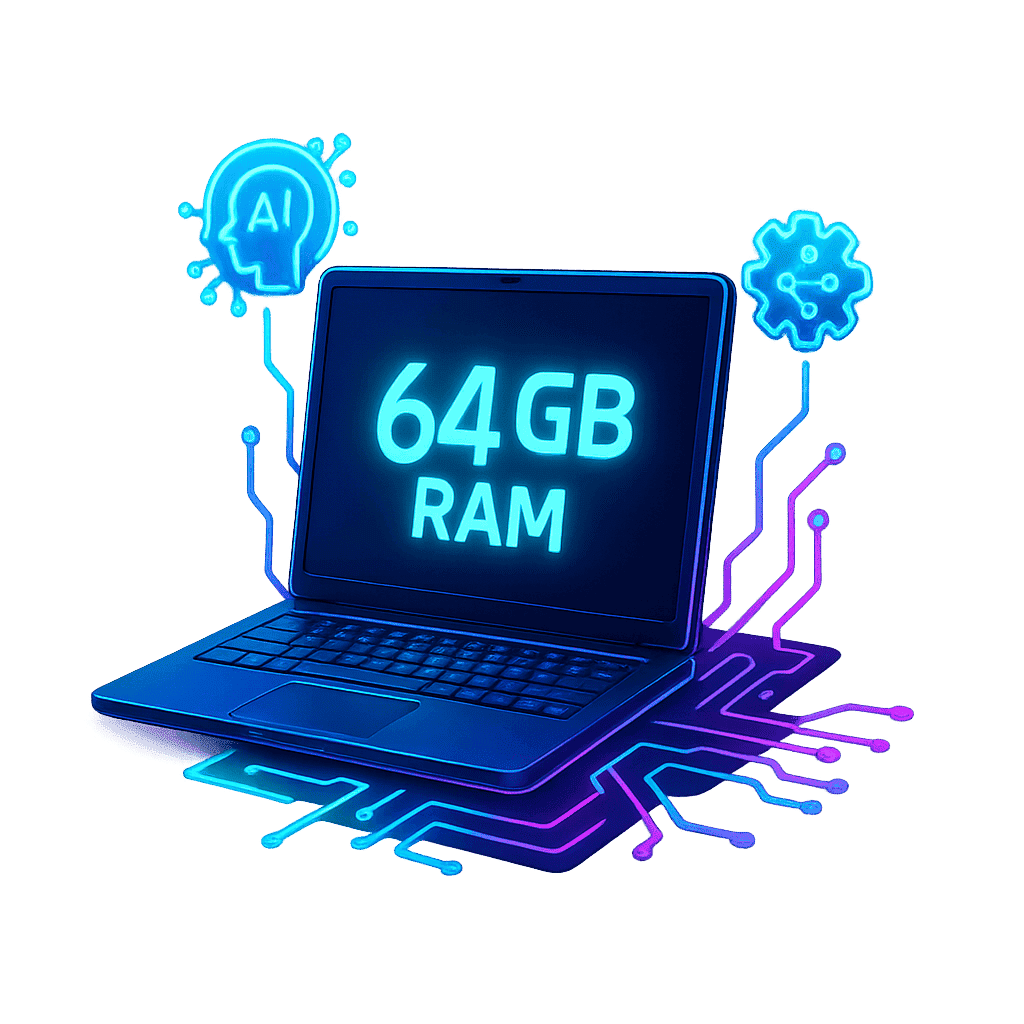Ever tried spinning up a local Large Language Model (LLM) on a 32 GB RAM laptop, only to watch it sputter, crash, or refuse to load? If you’re serious about exploring Generative AI or building autonomous Agentic AI flows on your own machine, 32 GB simply won’t cut it anymore.
Today, the tooling and model sizes have ballooned to the point where 64 GB of RAM is fast becoming a baseline requirement. In this post, we’ll dig into why that extra memory matters, back it up with real-world examples, and lay out the upsides and downsides of making the jump.
Table of Contents
- Why Local LLMs Demand More Memory
- The Limits of 32 GB RAM
- How 64 GB RAM Smooths Your AI Workflow
- Cost vs. Productivity: Is It Worth It?
- Pros and Cons of Upgrading to 64 GB
1. Why Local LLMs Demand More Memory
- Model Size Growth: Modern open-source LLMs like Llama (8B+) or Mistral (7B+) load hundreds of millions to billions of parameters into RAM when you run them locally. That alone can eat up 24–32 GB before you even start your code.
- Token Windows & Context: Agentic flows often stitch together multiple inputs from tool calls, user queries, knowledge dumps into one session. Each token you feed in consumes memory, and longer context windows quickly add up.
- Parallel Processes: You’ll likely run a tokenizer, the model inference engine, data pre- and post-processing pipelines, and maybe even a small local database or vector store simultaneously. All share the same RAM pool.
2. The Limits of 32 GB RAM
- Model OOM (Out of Memory) Errors: You might hit errors like CUDA out of memory or simply have your system kill the process when RAM runs dry.
- Slow Swapping: Once you exceed physical RAM, your OS starts paging to disk; dramatically slowing down inference, training, or any interactive work.
- Concurrency Bottlenecks: Running a notebook server, web UI, and model inference at once on 32 GB can leave you juggling which process gets memory and which gets ousted.
3. How 64 GB RAM Smooths Your AI Workflow
- Larger Models, Bigger Contexts: With 64 GB, you can comfortably load 13B-parameter open-source models, experiment with 8K+ token windows, and chain multiple calls for an agentic pipeline without hitches.
- Headroom for Tools: Keep your vector store (e.g., Chroma, Pinecone SDK), your FastAPI wrapper, and your debugging tools all running in parallel without memory contention.
- Faster Iteration: No more waiting for swap files; your loops execute smoothly, letting you prototype new prompts and agent actions in real time.
4. Cost vs. Productivity: Is It Worth It?
- Price Premium: Some high-end laptops or upgrade kits for 64 GB can add $200–$400 over their 32 GB counterparts.
- Future-Proofing: AI models continue to grow. Investing in 64 GB today saves you from upgrading again in a year or two.
- Resale Value: Machines with 64 GB tend to hold value better among niche AI enthusiasts and content creators.
5. Pros and Cons of Upgrading to 64 GB
| Pros | Cons |
| Run hefty LLMs and agentic flows locally without errors | Higher upfront cost |
| Smooth multitasking, no more memory swapping | Fewer laptop models offer easy upgrades |
| Better support for future, larger AI models | Slightly higher power draw and heat |
| Faster iteration, debugging, and experimentation | Not necessary if you only use cloud VMs |
Summary
As Generative AI and Agentic workflows grow more sophisticated, your local machine’s memory becomes a key bottleneck. While 32 GB RAM might have been enough a couple of years ago, today it leads to frustrating crashes and slowdowns. Upgrading to 64 GB ensures you can load larger models, maintain longer contexts, and run your entire AI stack smoothly, offering a clear productivity boost that often outweighs the extra cost.
FAQ
- Do I need 64 GB RAM for all AI work?
Only if you’re running models locally. If you rely entirely on cloud GPUs or APIs, 32 GB might suffice for development. - Can I start with 32 GB and upgrade later?
Yes, many desktop and some high-end laptops allow RAM upgrades. Check compatibility first. - What about using swap on SSD/NVMe?
Swap helps avoid crashes but is much slower than physical RAM and will degrade your SSD over time.
Thanks for your time! Support us by sharing this article and exploring more AI videos on our YouTube channel – Simplify AI


Leave a Reply